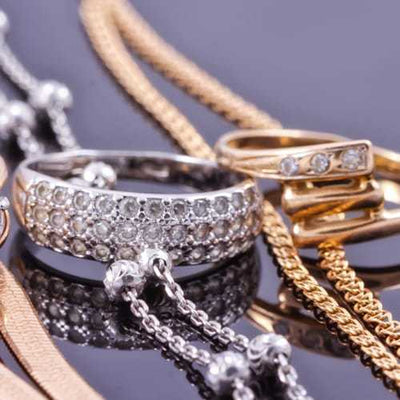The Ancient and Fascinating Origin of Earrings
Earrings are probably the most commonly worn type of jewelry in the world. These days, men and women alike wear earrings, whether they're haute couture hoops made of precious metals, funky studs, or the gauge earrings popular with young people. Earrings are so popular that parents often have their infant girls' ears pierced so that they can grow accustomed to wearing earrings early in their lives.
Earlobes are a natural place to enhance with ornamentation—and indeed, humans have been doing so since before the beginning of recorded history. Across the world, in many cultures throughout time, earrings have been used to denote cultural identity or tribal affiliation, or to indicate status. But most of the time, earrings have been so popular because of their decorative function. Earrings sit near the face, where most of us look while speaking to someone, so they're an immediate indicator of someone's rank, sense of style, or wealth.
Ancient Sumerian women's earrings are the earliest earrings archaeologists have discovered—they date from perhaps 2500 B.C.E. and are typically gold hoops. Earrings of twisted wire, beads, and pendants were popular in the Aegean, Crete, and Cyprus. Egyptian men and women both wore earrings, and they were popular among the Greeks and Etruscans, too. Roman earrings informed Byzantine styles that remained popular until European hairstyles covered the ears for a few centuries.
In the seventeenth century, pendant earrings came into fashion, for men and women alike—though men would typically only wear them in one ear. Like most fashion during that time, they were very elaborate, and by the 18th century, many styles actually had additional rings so that women could tie them into their hair in order to take some of the weight off their earlobes. By the 19th century, such additions were unnecessary—the neoclassical style we've come to associate with Jane Austen novels and films privileged simpler styles of dress, and earrings became much lighter.
At the dawn of the 20th century, earrings weren't as popular with American women. They had become associated with loose women and immigrants, and thus ear piercing declined in popularity. But, by the 1920s, costume jewelry had grown popular, and earrings showed up again, becoming the accessory of choice in dangling styles that complimented the elaborate headdresses of the time. By the thirties, they were worn closer to the face, to fit better with the hat styles of the time. Of course, accessories always change with the times—the earrings of the 1940s evolved to compliment the popular padded shoulders and sculpted hairstyles, but by the fifties they'd become more feminine to match the ultra-girly clothes that were in style. This was also about the time that ear piercing became popular again—especially after Queen Elizabeth II got her ears pierced.
Today, women and men who choose to wear earrings have more options than ever before. Whether it's designer earrings from a jeweler like Noe's or funky costume designs from an independent website, there's something out there for everyone.
If you are looking for earrings in Kansas City, come by Noe's. We have a beautiful variety ranging from diamond studs to elaborate pendants and hoops. We even pierce ears in our store!
At Noe's, we adore earrings! Visit us online at Noe's Jewelry, or in person at our Raymore, Missouri jewelry store for the best selection of earrings in the Kansas City area.




